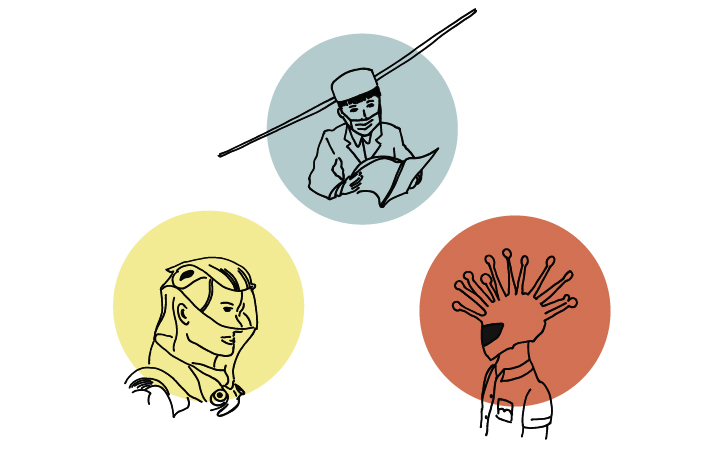
3D-Printed Tools
Fablabs and Makerspaces as well as 3D printers are increasingly distributed in private households across the globe. Early on in the pandemic, they became the production place for a range of 3D printed ‘Covid tools’. They were designed to avoid directly touching shared surfaces where the virus could potentially remain active: such as door handles, elevator buttons or shopping carts. Instructions were often shared via open source online platforms, which prompted variations and improvements by the wider community. Later on, commercial versions were mass-produced and distributed through supermarkets and on school grounds.
In the United States, a public-private partnership involved the FDA , Department of Veterans Affairs (VA) Innovation Ecosystem and the National Institutes of Health (NIH) 3D Print Exchange, to share data and coordinate on open-source medical products in response to the coronavirus. It also provided resources connecting health care providers and 3D printing organisations. Among requested tools were ear savers for medical workers who need to wear masks for long periods of time as well as face shields as an additional protection, protective goggles, ventilator valves and swabs for testing.
At the height of the pandemic, with limited masks available and industrial textile mask production temporarily limiting bias tape availability, a 3D printed tool was also developed to produce bias tape in support of local mask sewing groups.
While some of the tools became relevant to fill gaps caused by supply chain interruptions and general shortages, others such as face shields or hand-less door openers were met with skepticism, as they appeared to be less efficient in containing the virus than previously assumed or advertised. Another concern was the wide release of unregulated products. A decidedly straightforward approach to design, most tools were quickly implemented and among the earliest responses, but remained close to already existing solutions. Among the less → mainliner proposals were “Covid hooks”. Although not widely adopted, they envisioned the most speculative approach among the 3D printed tools. Not only reducing direct touch of shopping carts, door handles etc. as much as possible, they also extend the human form and shape new ways of interacting with the environment.
Keywords:
Physical Distancing, Collaborative Design, Decentralised Production
Further reading:
→ Choong, Y.Y.C., Tan, H.W., Patel, D.C. et al. The global rise of 3D printing during the COVID-19 pandemic. Nat Rev Mater 5, 637–639 (2020).
→ Novak, James & Loy, Jennifer. A quantitative analysis of 3D printed face shields and masks during COVID-19. Emerald Open Res 2020, 2:42
→ Pearce, Joshua. “Guest Blog: MTU Releases Three New Open-source Tools for COVID-19.” Michigan Technological University, 21 September 2020